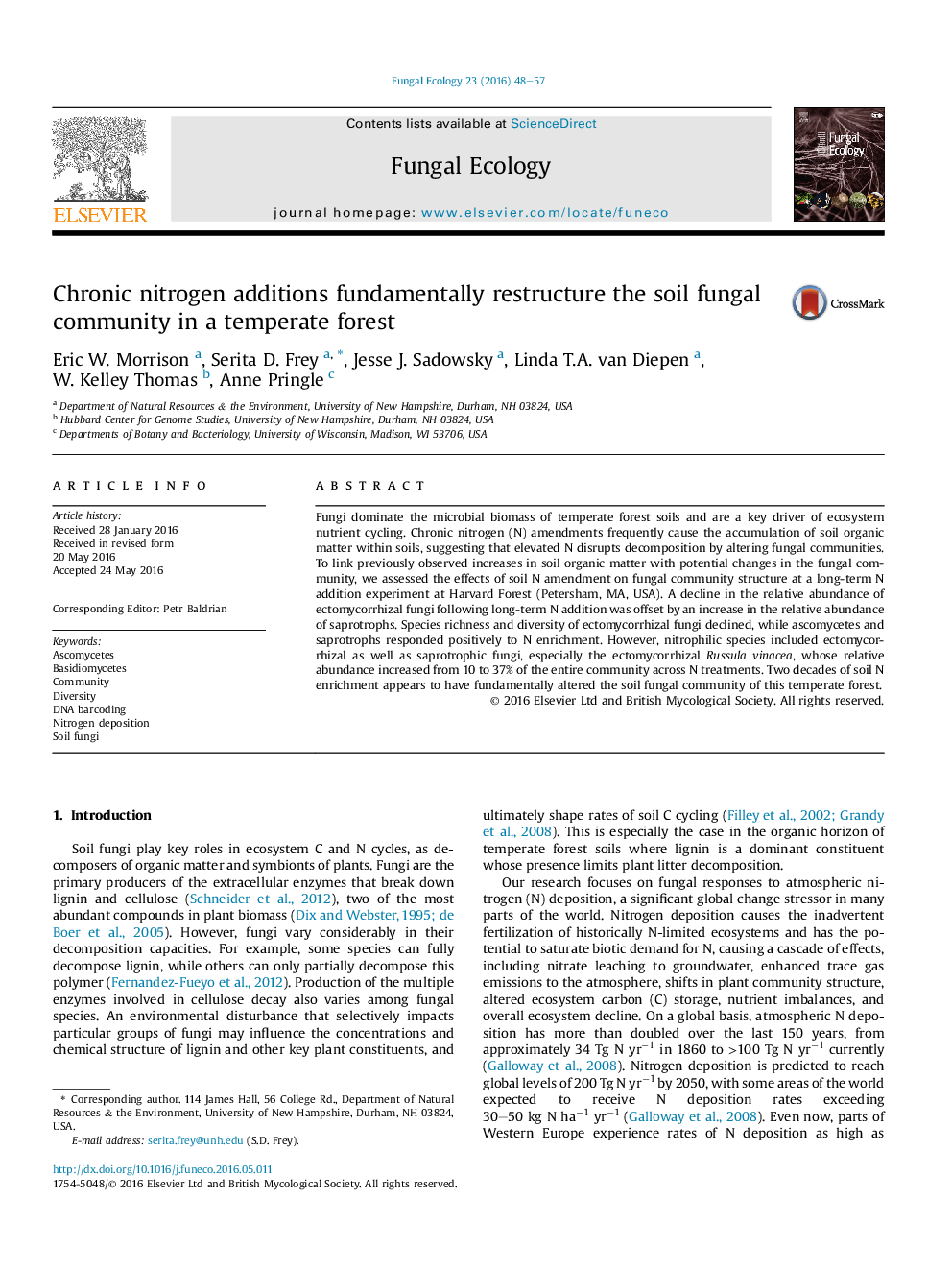| Article ID | Journal | Published Year | Pages | File Type |
|---|---|---|---|---|
| 8384309 | Fungal Ecology | 2016 | 10 Pages |
Abstract
Fungi dominate the microbial biomass of temperate forest soils and are a key driver of ecosystem nutrient cycling. Chronic nitrogen (N) amendments frequently cause the accumulation of soil organic matter within soils, suggesting that elevated N disrupts decomposition by altering fungal communities. To link previously observed increases in soil organic matter with potential changes in the fungal community, we assessed the effects of soil N amendment on fungal community structure at a long-term N addition experiment at Harvard Forest (Petersham, MA, USA). A decline in the relative abundance of ectomycorrhizal fungi following long-term N addition was offset by an increase in the relative abundance of saprotrophs. Species richness and diversity of ectomycorrhizal fungi declined, while ascomycetes and saprotrophs responded positively to N enrichment. However, nitrophilic species included ectomycorrhizal as well as saprotrophic fungi, especially the ectomycorrhizal Russula vinacea, whose relative abundance increased from 10 to 37% of the entire community across N treatments. Two decades of soil N enrichment appears to have fundamentally altered the soil fungal community of this temperate forest.
Related Topics
Life Sciences
Agricultural and Biological Sciences
Ecology, Evolution, Behavior and Systematics
Authors
Eric W. Morrison, Serita D. Frey, Jesse J. Sadowsky, Linda T.A. van Diepen, W. Kelley Thomas, Anne Pringle,
